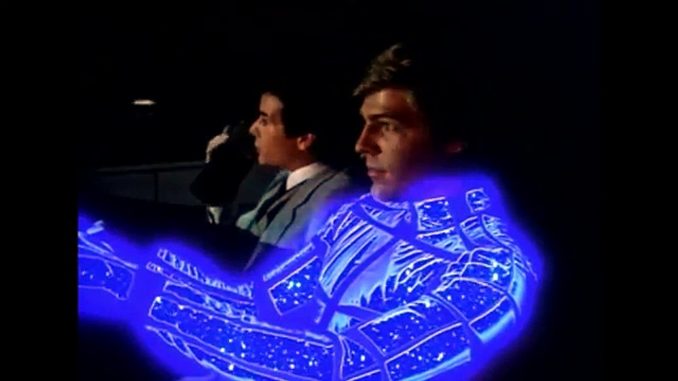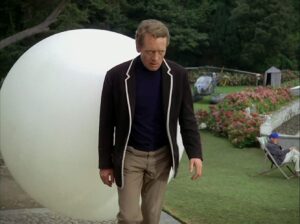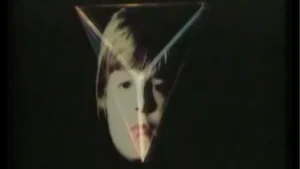
Automan. Photo Credit: 20th Century Fox Television
Behold “Automan,” the 1983 TV series that asked the burning question: “What if your computer password came to life and fought crime?” This short-lived show is a testament to the ’80s’ unshakeable belief that computers were magic and that the future was all about neon lights and impractical vehicles.
In the neon-soaked world of “Automan,” we follow the adventures of Walter Nebicher, a police programmer and all-around computer whiz who apparently had too much time on his hands. Walter, in a stroke of genius (or madness), creates the world’s most advanced artificial intelligence program. But this isn’t just any AI – no, this one decides to manifest as a glowing blue man in a skintight suit. Because that’s exactly what AI would do, right?
This luminous creation calls himself Automan (short for “Automatic Man,” in case the bright blue glow didn’t give it away). Played by Chuck Wagner with all the charisma of a man who knows he’s wearing the silliest costume on television, Automan becomes Walter’s crime-fighting partner. It’s as if Siri decided to become a superhero instead of just misunderstanding your requests for directions.
Of course, every hero needs a sidekick, and Automan gets Cursor, a floating polyhedron that zips around creating whatever Automan needs. Cursor is essentially a sentient computer mouse with attitude, creating everything from holocars to holoplanes to hologuns. It’s as if clippy from Microsoft Word decided to hit the gym and become a superhero’s assistant. “It looks like you’re trying to fight crime. Would you like help with that?”
But Automan isn’t just a walking glow stick; he comes with an array of powers that would make even the most forgiving sci-fi fan raise an eyebrow. He can create vehicles and objects out of thin air, all of which are made of light and disappear when not in use. It’s environmentally friendly, sure, but try explaining that to the poor sap whose car just vanished because Automan needed to recharge.
The pièce de résistance of Automan’s arsenal is the Autocar, a vehicle that can make 90-degree turns at full speed. Physics majors across the nation collectively fainted when they saw this, while the rest of us just thought, “Cool, glowing car go vroom!” It’s like someone watched “TRON” and thought, “You know what this needs? More traffic violations.”
Of course, every hero needs a sidekick, and Automan gets Cursor, a floating polyhedron that zips around creating whatever Automan needs. Cursor is essentially a sentient computer mouse with attitude, creating everything from holocars to holoplanes to hologuns. It’s as if clippy from Microsoft Word decided to hit the gym and become a superhero’s assistant. “It looks like you’re trying to fight crime. Would you like help with that?”
Each week, Walter and Automan would tackle a new crime, usually involving computers because, in the ’80s, if a computer was involved, it was automatically high-tech and scary. Hacking? Call Automan. Computer fraud? Automan’s got this. Someone using too many floppy disks? You bet Automan’s on the case. The show treated every computer-related crime with the gravity of a potential apocalypse, which, given the processing power of ’80s computers, was about as likely as Automan blending in at a nightclub.
The beauty of “Automan” was its complete commitment to its bonkers premise. This wasn’t a show that winked at the audience; it stared at them with the unblinking gaze of a true believer, daring you to question why a glowing blue man in tights was the logical conclusion of computer evolution. It was the ’80s equivalent of someone today creating an AI and it immediately demanding a TikTok account and a supply of avocado toast.
Despite its innovative premise (or perhaps because of it), “Automan” lasted for all of 13 episodes before CBS pulled the plug, presumably because the network’s electric bill skyrocketed from all the neon effects. But like all great terrible things, it left an indelible mark on the psyche of everyone who witnessed its brief, luminous existence.
In the years since its cancellation, “Automan” has achieved cult status, remembered fondly by those who saw it and discovered with a mixture of awe and confusion by later generations. It stands as a shining (literally) example of the ’80s’ optimistic view of technology, where computers could do anything, including spawning crime-fighting hunks in glow-in-the-dark bodysuits. It’s a far cry from today’s tech fears of AI taking over the world – in “Automan,” the AI is too busy coordinating its outfit with its holocar to bother with world domination.
“Automan” represents a unique moment in television history, a time when the possibilities of computers seemed endless and the fashion sense nonexistent. It’s a glorious relic of an era when any idea, no matter how ludicrous, could make it to primetime if it involved computers and flashy effects. In a world where modern TV often takes itself too seriously, “Automan” reminds us of a simpler time, when the solution to crime was a man in a glowing suit who could create his own transportation.
So here’s to you, “Automan,” you beautiful, glowing disaster. In a world of gritty reboots and prestige TV, sometimes we need to remember the shows that dared to be utterly, unashamedly absurd. May your neon never fade, and may your 90-degree turns continue to defy the laws of physics in our hearts forever. After all, in a world where we’re teaching AI to write poetry and drive cars, is a crime-fighting computer man in a glow-in-the-dark bodysuit really that far-fetched? On second thought, don’t answer that.





